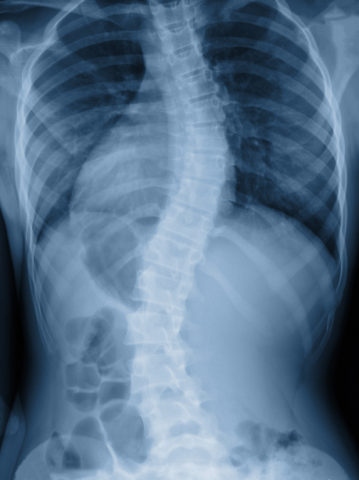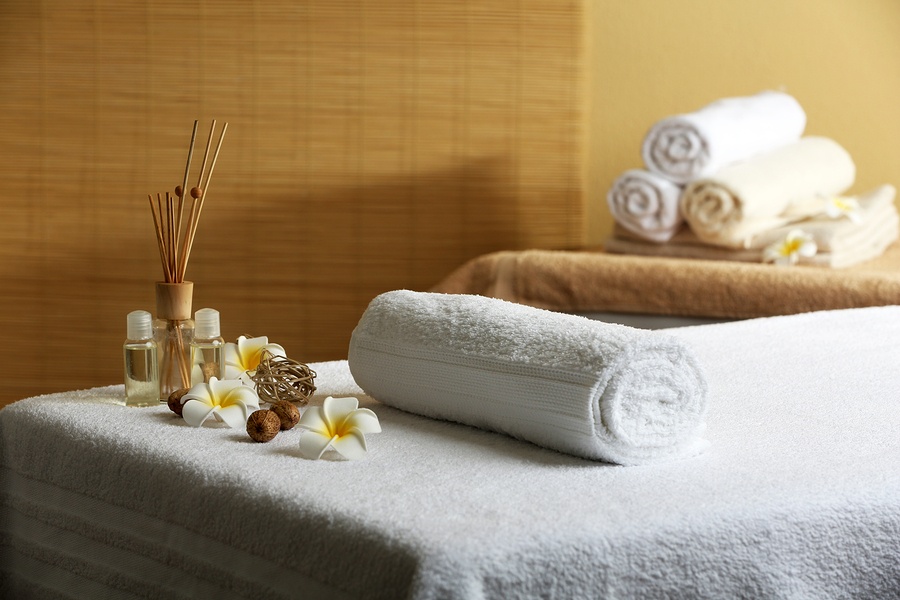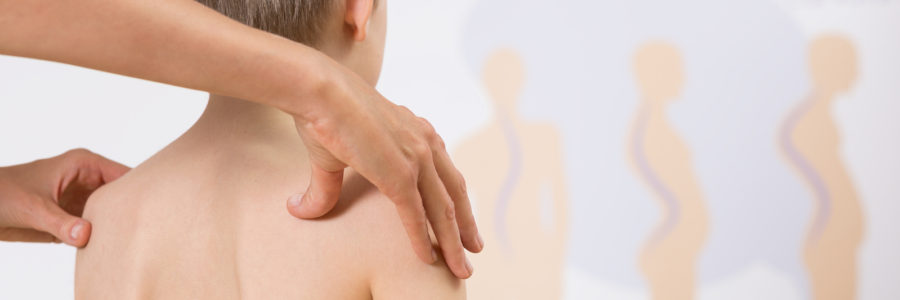
Over 30% of the American population has some form of scoliosis. You may have already helped clients who suffer from this condition in your regular bodywork or therapy practice. While traditional treatments vary, massage therapy is a safe addition to any client’s treatment plan.
What is Scoliosis?
Scoliosis is a condition of the spine. It causes the spine to curve left or right into a distinctive “S” or “C” shape. The spine compresses. This compression throws off the patient’s balance, and can contribute to a variety of health complications.
- Sore, painful muscles
- Difficult, stiff movement
- Hunch back
- Lung and heart problems
- Numbness
- Muscle weakness
If left untreated, the spine will continue to curve. This can lead to nerve, joint, and ligaments damage, as well as permanent disability.
What Causes Scoliosis?
Most scoliosis cases are classified as idiopathic. That means there is no known cause.
For about 20% of cases, doctors can point to a definite root condition. These cases are classified as structural or non-structural.
Structural scoliosis causes the spine to bend into a rigid curve that cannot be corrected. It is caused by underlying conditions like
- Cerebral palsy
- Muscular dystrophy
- Birth defects
- Tumors
- Infections
- Marfan’s or Down Syndrome, or similar genetic disorders
The spine of a patient suffering from non-structural scoliosis works normally. The characteristic curve is caused by injury, weakness, or illness of surrounding body parts. When the cause is treated, non-structural scoliosis generally disappears.
Scoliosis can also be developed while still in the womb. Congenital damage to growing vertebrae can cause the spine to curve, not divide properly, or not grow completely. Some patients with congenital scoliosis are not diagnosed until they are between the ages of 10 and 15. During this time, many children go through several growth spurts, which makes structural malformations more noticeable.
Degenerative scoliosis is caused by the wearing of joints and discs in adults. Their damaged joints cause the surrounding muscles to strain, which leads to a curved spine.
Massage Therapy for Scoliosis Patients
While scoliosis massage cannot correct curved or twisted bones, including the spine, it can help clients reduce pain and increase mobility.
- Massage relaxes muscles that are pulled out of place by shifted bone structures, which can significantly calm tight, uncomfortable sensations.
- Deep tissue techniques increase blood circulation and break up scar tissues, which makes it easier for patients to move freely.
- Patients who receive massage prior to chiropractic or neuromuscular therapies report better results from these treatments.
- Massage is known to soothe the mind as well as the body. A decrease in mental stress is linked to a better ability to deal with chronic pain issues.
Early and regular scoliosis massage therapy, in conjunction with standard medical treatments like exercise and the use of a brace, can help scoliosis patients avoid complicated surgeries.
There is no cure for scoliosis. However, it is highly manageable. The goal of treatment is to reduce the progression of spine curvature, reduce discomfort, and restore or improve mobility. Scoliosis Massage therapy can help your client achieve these goals more quickly than with standard treatments alone.
Anatomy of a Massage Session
 Just as the human body has a very specific anatomy that only varies slightly from individual body to the next, so does a massage session. If you are going to become a massage therapist, you might be wondering what the various necessary components are to most standard massage sessions.
Just as the human body has a very specific anatomy that only varies slightly from individual body to the next, so does a massage session. If you are going to become a massage therapist, you might be wondering what the various necessary components are to most standard massage sessions.
- Introduction / Meet & Greet: When your client first walks into your massage environment, you want to present a positive and happy attitude to assist in guiding their energy towards a relaxed and uplifted place.
- Paperwork / Check-In: In most cases, you’re going to want to have your customer fill out a basic worksheet detailing any known medical issues, seeking to learn about the specific pain or discomfort they are experiencing. In this phase, be sure to find out if your client has received professional massage treatment previously and if so, what the frequency of that treatment has been.
- Hand-off / Room Entry: If you are in a larger facility, someone else might be doing the registration process and will then hand off the client to you as the massage therapist. In the case where you are operating a freelance practice or where you are the only person in the studio at the time, you’ll be greeting and welcoming the client to their room.
- Environment Test: While indicating to the customer that it is your goal to make the environment perfect for them, use your own professional guidance to make educated assessments about the state of the studio. Is it drafty? Is it too hot or is the air stagnant? Many environmental issues can be fixed with only minor modifications.
- Manipulate Environment: Make any logical modifications to the massage environment to ensure it is as comfortable to the client as possible.
- Ask Questions: Some clients will appreciate some quiet music or some ambient sounds, while others will want near-complete silence. Ask the client questions about the environment and then depending on the answers, try to give the customer the environment that they request.
- Reiterate Details: Take a moment to repeat the details you’ve received from your client and make sure you didn’t misunderstand anything. By letting the client know they were heard correctly, you prepare them for even greater peace of mind. Make sure you’ve asked them about their trouble areas and what level of pressure they prefer.
- Check Readiness: The final step to ensuring you are entirely on the same page with your client, and once they are fully situated on the massage table ask them if they are prepared to begin. It might seem like a trivial step, but it shows respect and also helps to bring the energy to a relaxed and comfortable place.
- Massage Phase: depending on the type of massage service discussed and desired, begin to give that treatment. While massaging your client, try asking a few questions about the pressure and various other environmental elements to make sure you haven’t gone astray of the client’s wishes.
- Resolve: After the massage, you’ll want to offer your client a glass or bottle of water and some time to get back in order. Leave the massage area and allow them time to put clothing back on and come back to a fully alert state.
Payment collection was not specifically added to this walk-through, due to the fact that it can be inserted in the beginning or the end of the treatment, as preferred by the studio or establishment offering the service. Obviously, this guide is not going to be universally applicable to every single massage studio or institution, but it is a great start.
For additional information about what to expect during a massage session please contact our massage school clinic.





